History of U.S. Military Handgun Rounds
August 24th, 2021
6 minute read
The Continental Congress borrowed from the British to help free a new republic from the British. It ordered up 20,000 smoothbore .62-caliber pistols, Model of 1760, patterned after a flintlock birthed in the mother country. Our first military sidearms were produced at Rappahannock Forge in Virginia. Their similar replacement, in 1805, served in the War of 1812.
The notion that a pistol might fire more than one shot before re-charging inspired mechanically minded lads, from Connecticut to the Cumberlands, to keep oil lamps burning well into the night. Early in 1836, Samuel Colt earned his first revolver patent. But a decade later he was struggling to make something of it.
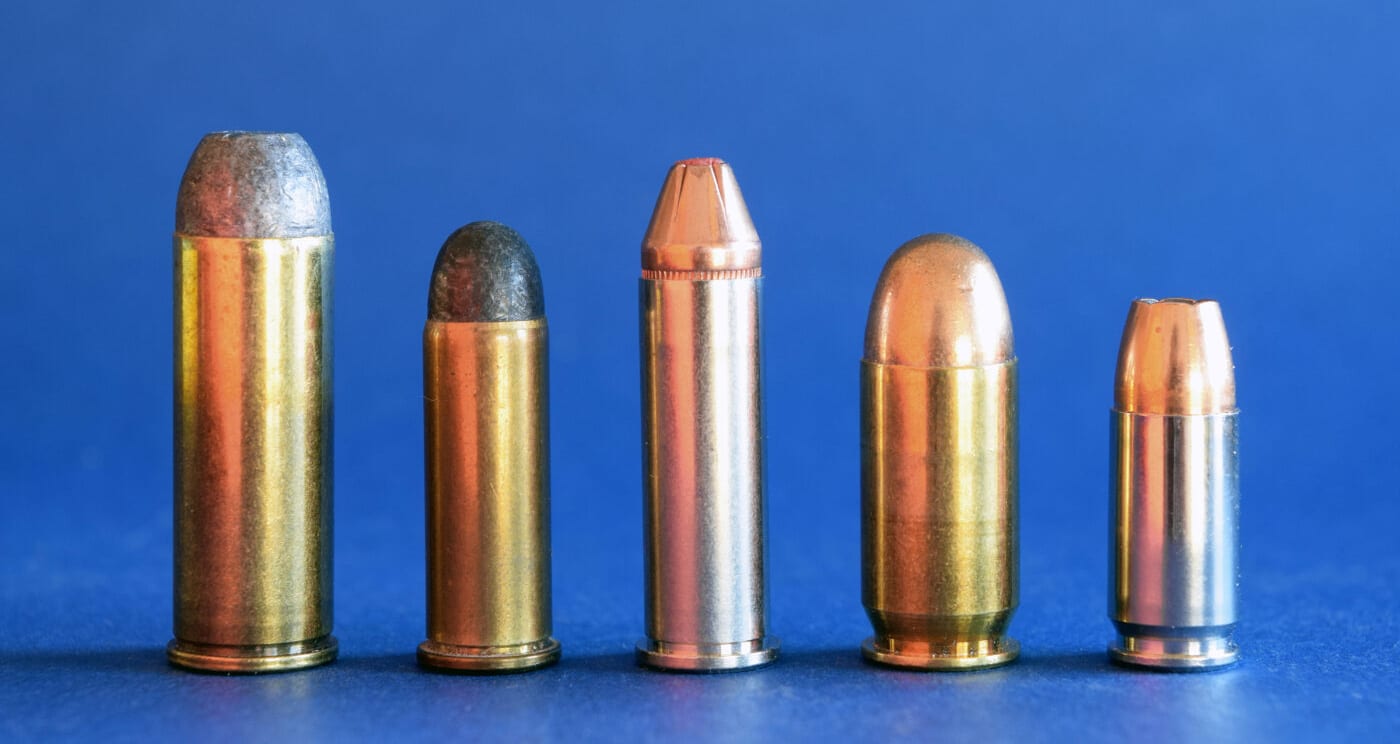
Enter Texas Ranger Captain Samuel H. Walker, in search of a new revolver. Heartened, but with no factory to build guns, the ambitious Samuel Colt priced one to the government. Within a week later the Ordnance Department agreed to buy 1,000, the Samuels Walker and Colt collaborating on the final arm. Eli Whitney, Jr. built the 73-ounce, .44-caliber pistols, which appeared as the 1847 Walker.
That October, during the Battle of Juamantla, a Mexican lance claimed Captain Walker.
Samuel Colt’s next cap-and-ball revolver was the slightly smaller .44 Dragoon (a pre-Civil War name for cavalry). It got tepid reviews. He scrambled to pitch another pistol as his attorney successfully staved off patent expiration in 1849, claiming the company had not received reasonable returns from it. That action protected development of the 42-ounce, .36-caliber 1851 Navy revolver, introduced in 1850. It proved so popular in and out of uniform, he would revisit its design for its 1873 Single Action Army cartridge revolver.
Onset of the Civil War hurried the 1860 Army Revolver into production. U.S. Ordnance adoption of this .44 sidearm would bring orders for 80,000 of the pistol’s 13-year run of 200,000. By 1861 Samuel Colt’s annual personal income had reached $1 million a year. Early in 1862 he was dead.
Legend has it Colt had demurred when employee Rollin White urged a breech-loading revolver with a bored-through cylinder. But Horace Smith and Daniel Wesson saw promise in metallic cartridges. They paid White royalties to build a .22 rimfire revolver. By the time Colt died, they’d produced 22,000.
Round and Round
In 1875 the U.S. Army adopted Colt’s 1873 Single Action Army (SAA) revolver. The military version in .45 Long Colt was hugely popular — so too the SAA in .44-40, added in 1878 to match the chambering in Winchester’s top-selling 1873 rifle. The SAA’s solid frame and 7 ½” screwed-in barrel are attributed to William Mason.
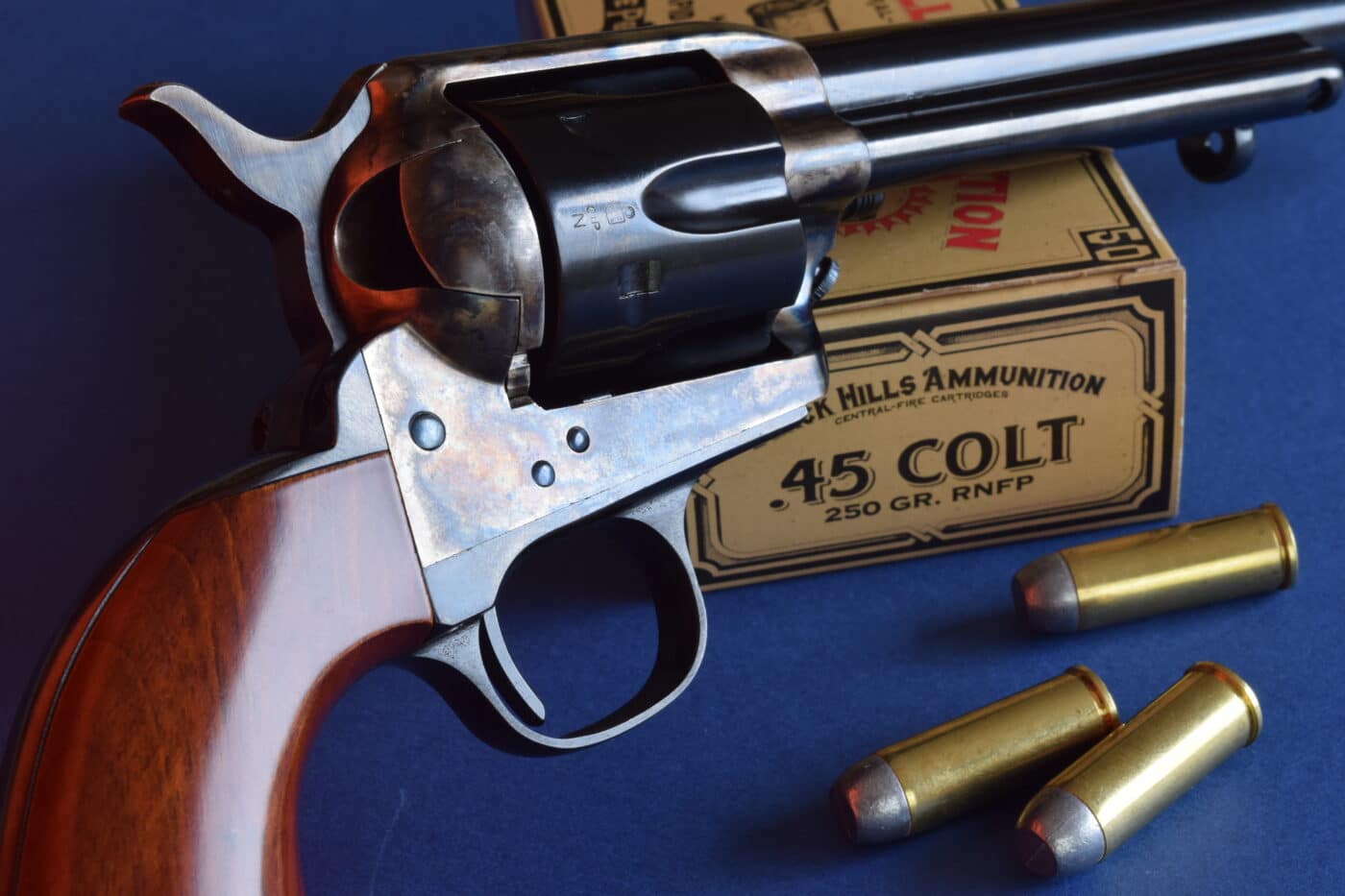
Over the SAA’s first eight years, 37,063 were built under government contract. Its popularity with gunslingers, lawmen cowboys and just about everyone else brought total production over half a million.
Even in its original blackpowder loading, the .45 Long Colt was a fearsome handgun cartridge. A charge of 40 grains FFg hurled a 255-gr. lead bullet at 810 fps to land a blow of 370 ft-lbs. Current .45 Colt loads with 225-gr. jacketed bullets at over 1,000 fps deliver nearly 500 ft-lbs.
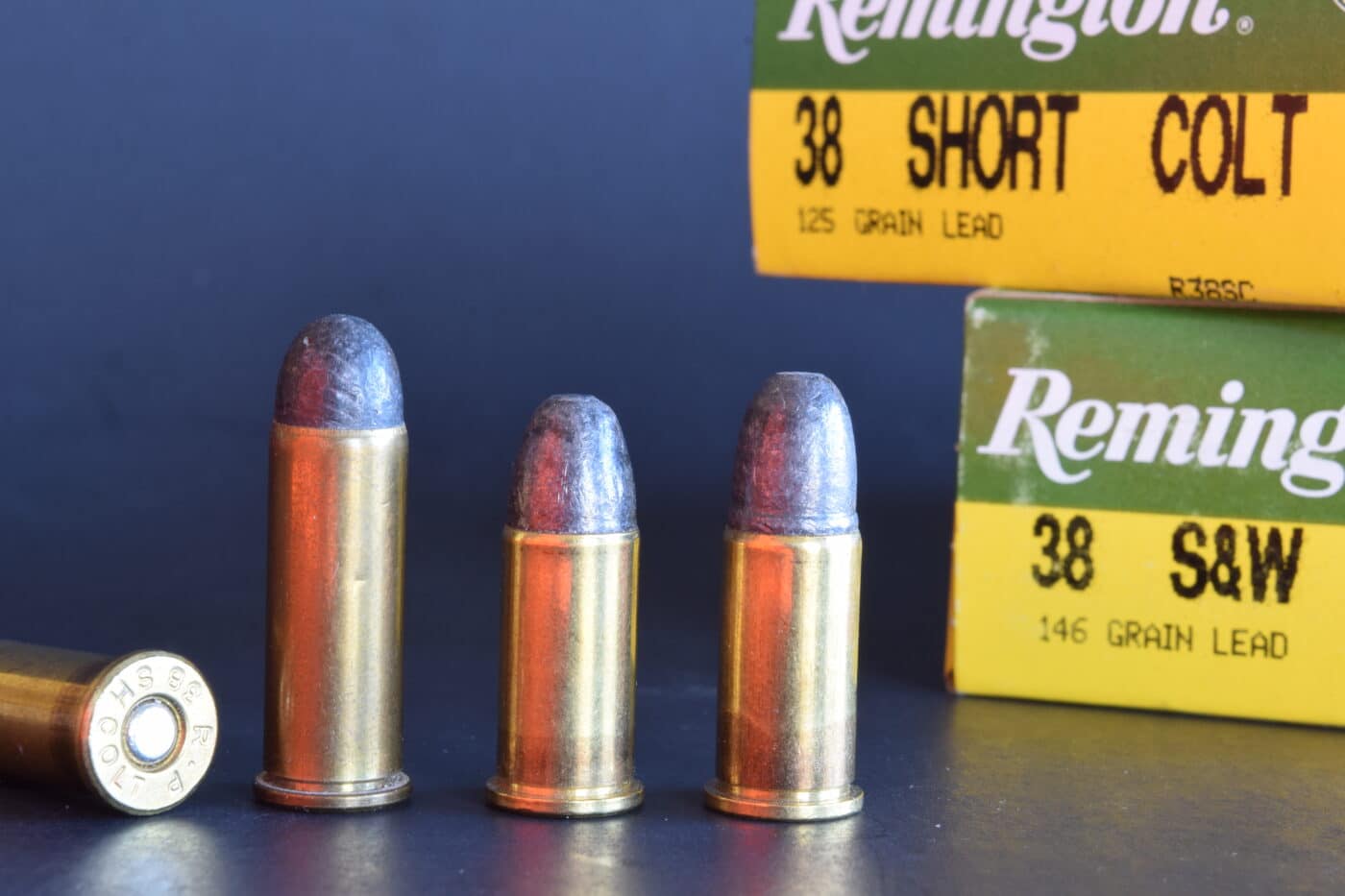
In 1892 the U.S. Army brought into service Colt’s Army and Navy Model double-action revolver, introduced in 1887. Our first military revolver with a solid frame and swing-out cylinder, it fired the .38 Long Colt, developed in 1875. The 150-gr. lead bullet clocked 770 fps, for 195 ft-lbs of energy, about what soldiers once expected of balls from the .44 Model of 1860! By the turn of the century, S&W would sell the armed forces a few Hand Ejector DA revolvers in this anemic chambering.
Modest recoil and the pivoting cylinders of these revolvers made them easy to shoot accurately and fast to reload. But during the Spanish American War and the Philippine Insurrection even multiple hits with the .38 Long Colt failed to stop enemy combatants. Also, at that time cavalry meant horses. A pistol that could turn a horse trumped one that with a good hit might unseat its rider.
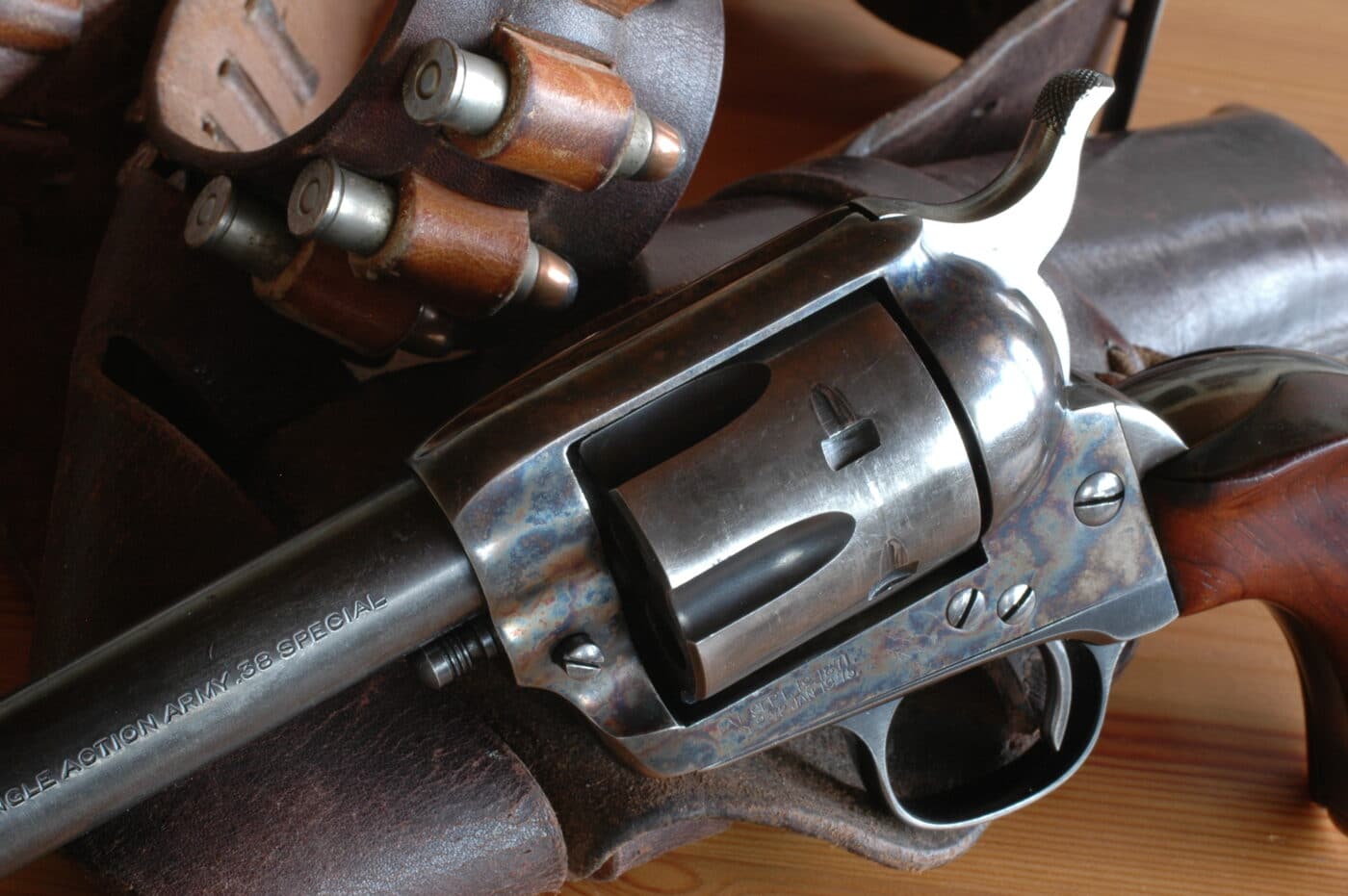
Criticism of the .38 Long Colt led to the development of the .38 Special. It held 3 grains more powder and appeared in 1902 in S&W’s Military and Police Revolver, designed in 1899. But Ordnance officers gravitated to John Browning’s self-loading handgun in .45 Automatic Colt Pistol, short rimless spawn of the .45 Long Colt. (The cartridges fire .452 and .454 bullets, respectively, in cases 1.290 and .898, base to mouth. In theory the .45 ACP headspaces on the mouth, but cases run as short as .890, and some chambers well exceed their .898 minimum. The extractor grimly holds functional headspace.)
Developed by John Browning in 1905 for his eight-shot self-loading pistol, the .45 ACP brought the U.S. Army back to the beefy bullets of 1873. But not to revolvers of that day!
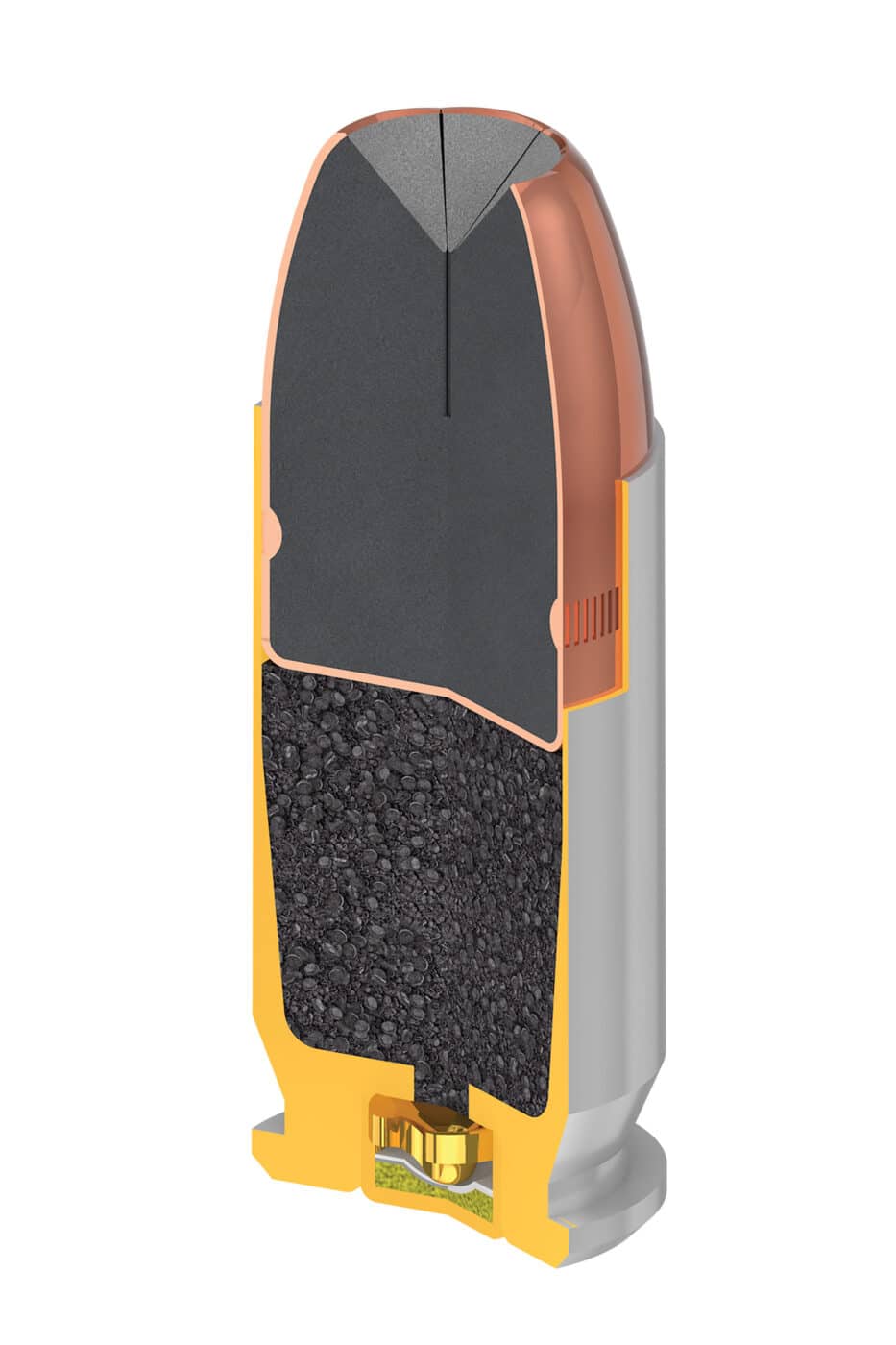
John Browning’s genius no doubt earned his pistols a close look. Still, the Army rejected his blowback-operated Model 1900 in .32 ACP, also its locked-breech successor in the more potent .38 ACP. Also spurned: the mild sub-.40 cartridges in Borchardt, Mauser and Luger pistols.
Moving Forward
The 1905 Browning self-loader functioned well in trials. With a 230-gr. jacketed bullet at 855 fps, the .45 ACP hit harder than its stature suggested, with 405 ft-lbs at the muzzle. Approved for further development by the U.S. Chief of Ordnance in 1907, this pistol become the Model of 1911, its .45 ACP cartridge our official service round.
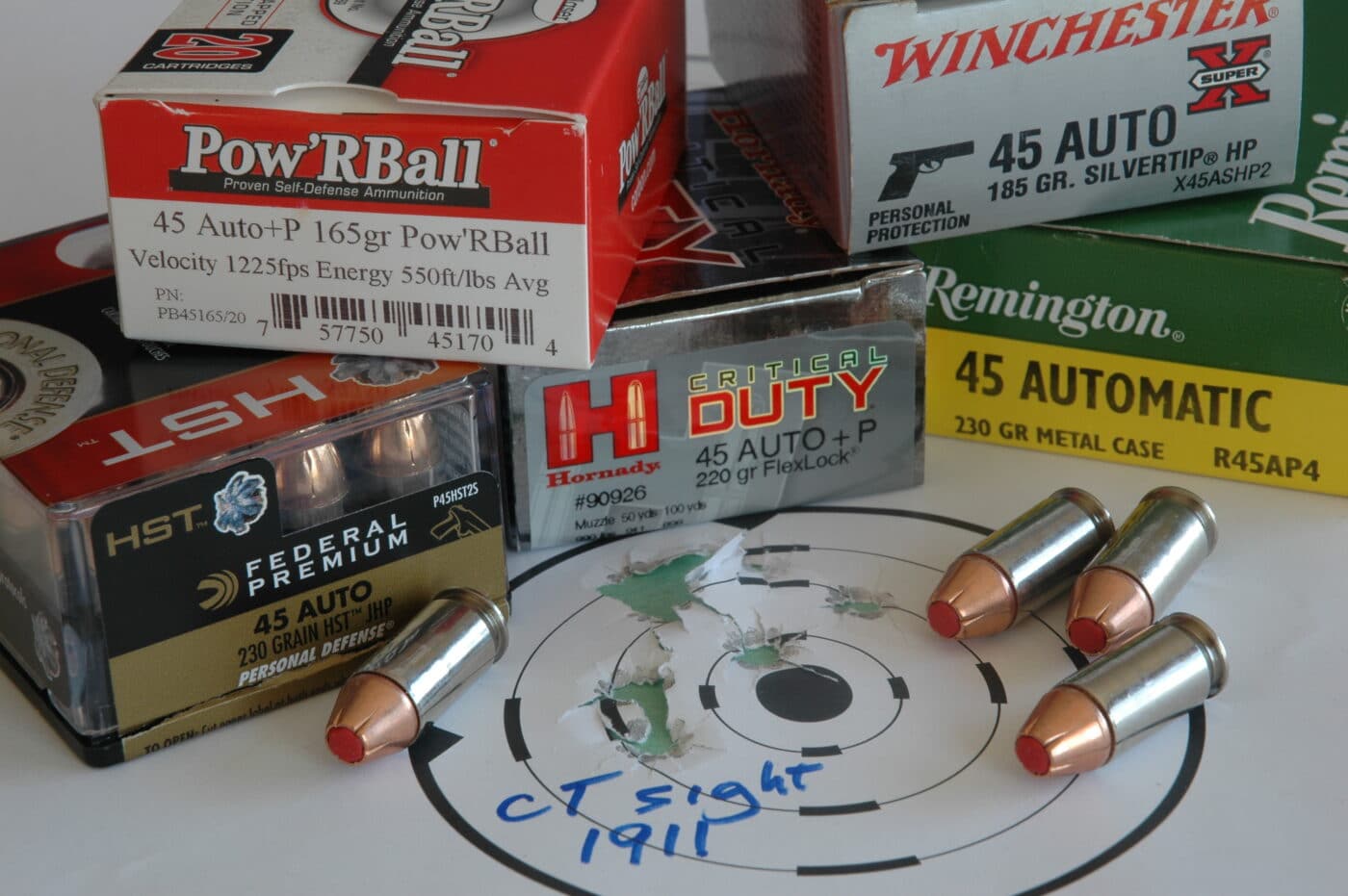
As the Great War broke upon the world, the Mil-Spec .45 1911 was in short supply. So, the Army contracted for DA revolvers bored for the .45 ACP. Colt’s New Service and S&W’s Second Model Hand Ejector were tweaked to become the “Model of 1917.” To load and clear their cylinders quickly, they were furnished with half-moon clips that held three rimless ACP rounds. (In 1923 Peters Cartridge Co. introduced the .45 Auto Rim, identical to the .45 ACP but with a rim that nixed the need for revolver clips.) Model of 1917 production halted in1919, but the revolvers stayed in service. About 21,000 saw overseas duty in World War II.
Volumes have been published on the 1911 pistol and its civilian variants, and on the myriad .45 ACP loads now available. Refined 1911s, like those from the current Springfield Armory, keep the pistol and its cartridge on best-seller lists.
In 1985 the U.S. Army made a contested leap from the .45 ACP to the 9mm. The newly adopted M9 pistol’s 15-shot capacity was double that of the 1911’s, and its lighter recoil led to more accurate shooting. The ammunition was also about half the weight. Eight rounds of 230-gr. .45 ball ammo scale about 6.05 oz.; 15 rounds of 115-gr. 9mm loads come in at 6.24. Almost double the firepower per ounce! The Army had to think too of shipping ammo and moving it about battlefields.
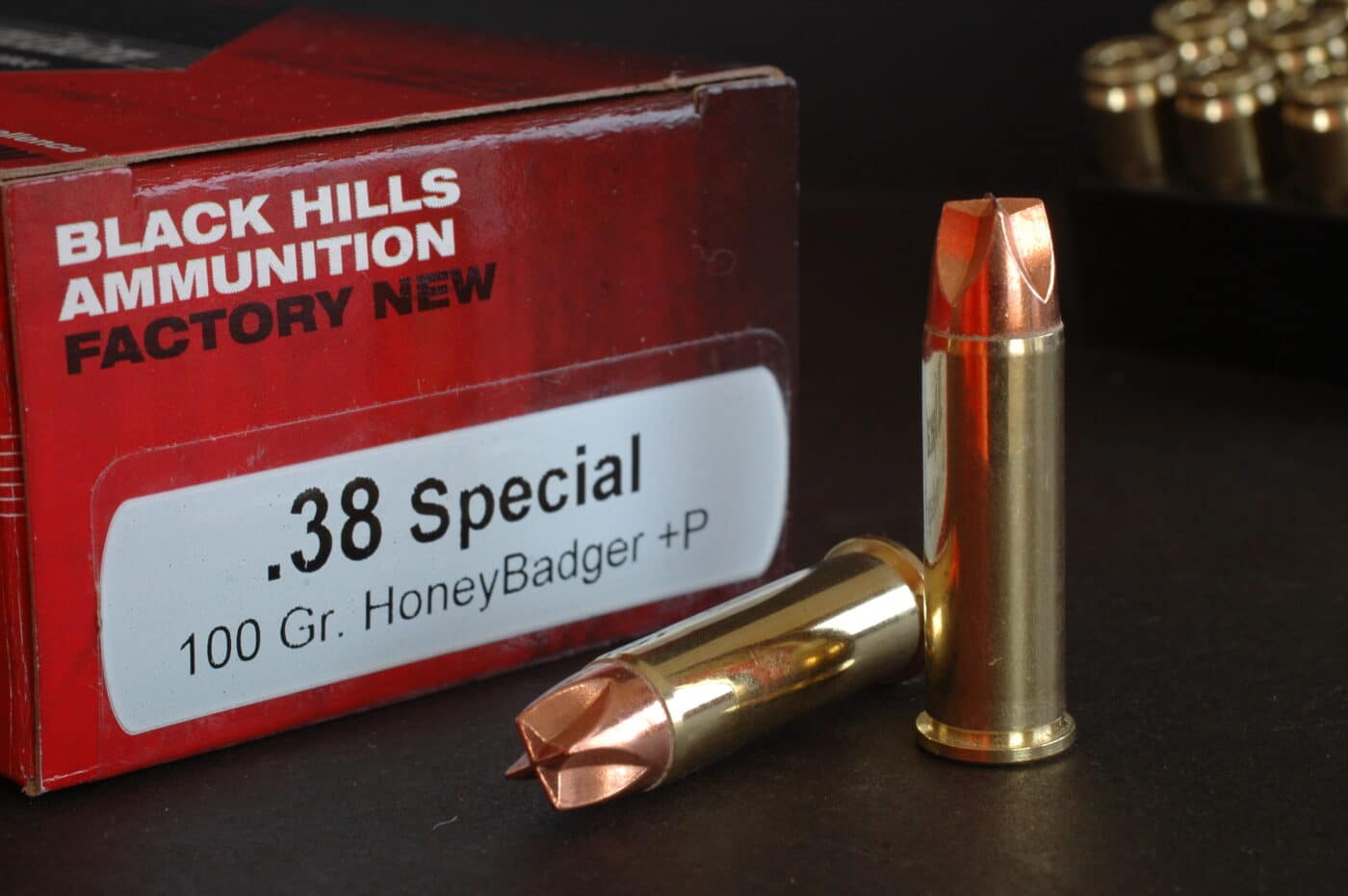
Introduced in 1902, the 9mm has put on muscle. Frisky commercial loads now push 124-gr. bullets to 1,175 fps, for 380 ft-lbs of punch. A broad range of bullet types, 115 to 147 grains, suits the 9mm to many applications. It has been adopted by governments worldwide.
Conclusion
Given two and a half centuries of military service, remarkably few handguns have been adopted as official U.S. sidearms, although there have been a great number of cartridges for which they have been chambered. From those early .62-caliber projectiles to the 9mm of today, the United States has had a broad range of rounds for its military sidearms. Wonder what will be next?
Editor’s Note: Please be sure to check out The Armory Life Forum, where you can comment about our daily articles, as well as just talk guns and gear. Click the “Go To Forum Thread” link below to jump in!
Join the Discussion
Continue Reading
Did you enjoy this article?

 173
173






